Nestled in the southern reaches of South Tyrol, Trudner Horn Nature Park, also known as Naturpark Trudner Horn or Monte Corno Nature Park, offers a haven of biodiversity and natural beauty and I want to show you the best hikes and places to stay.
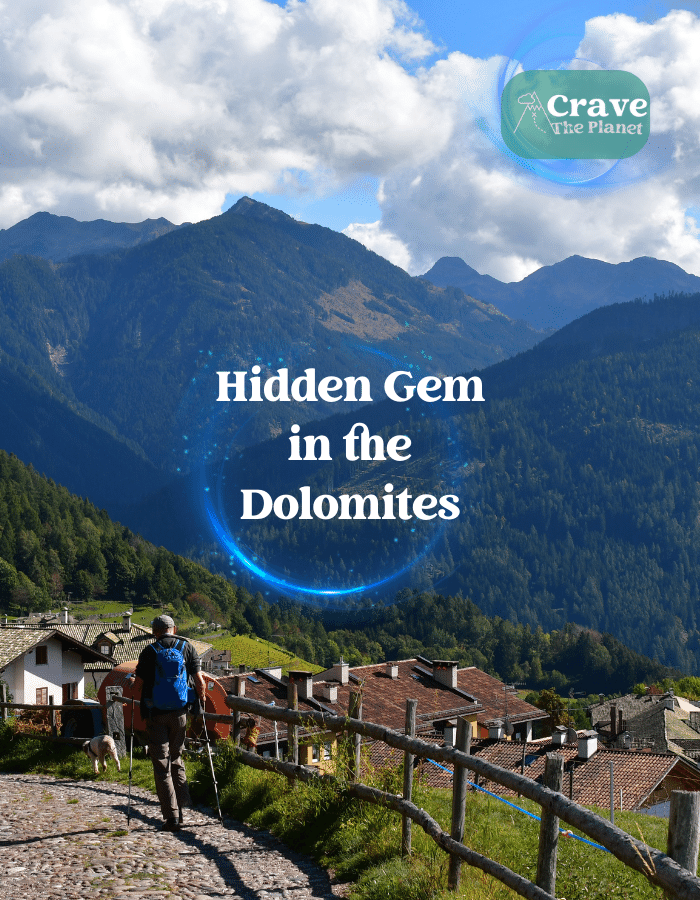
Your exploration of this park will lead you through a rich tapestry of flora and fauna, which has been the subject of various ecological studies due to its uniqueness.
I’ve put together a list of 3 amazing day hikes from a local so you can do to enjoy the natural scenery and eat delicious South Tyrolean cuisine.
Author’s Tip: This area is perfect for a day trip from Bolzano and away from the throngs of tourists in the Val Gardena.
The park extends over an area that provides a habitat to an array of species, with the hazel grouse being just one example of the wildlife that calls this protected area home. So whether you’re planning a nature trip in the Dolomites, coming to the Dolomites in summer, or wanting more things to do after a hut to hut hiking trip, this hidden gem will not disappoint.
What is Trudner Horn Nature Park?
Trudner Horn Nature Park, also referred to as Monte Corno Nature Park, lies in South Tyrol, a province in northern Italy nestled within the majestic Alps. The park is renowned for its porphyry and quartz porphyry rock formations, characteristic of the Dolomite region and only 1:30 minutes from Bolzano. It’s one of the best things to do in the Dolomites for people that like to get away from crowds.
The main town is called Truden. One of our favorite places to stay is the Sonnhof because it’s perfect for families with kids.
Top 3 Day Hikes in Trudner Horn Nature Park
1. Cisloner Alm (Best for Families)
- Route Dorfplatz Truden – Cisloner Alm
- Trail: Follow trail marker No. 1 from Trudner Dorfplatz through a combination of road and forest paths.
- Duration: Approximately 50 minutes to reach Cisloner Alm.
- Elevation
- Starting Point: Trudner Dorfplatz (1,122 m)
- Destination: Cisloner Alm (1,249 m)
- Elevation Gain: 127 meters
- Difficulty
- Initially steep, but levels off after a few minutes.
- Overall, considered an easy hike.
- Refreshments
- Cisloner Alm ensures dining options.
- A friendly team awaits, serving delicious South Tyrolean dishes.
- Opening Hours
- Open year-round with Wednesdays as the day of closure.
- No closure during July, August, and September.
- The menu
- The menu features a variety of local dishes, allowing you to savor the rich culinary heritage of the region.
- Child-Friendly
- Due to its easy difficulty, the hike is ideal for families with children (including those with strollers).
2. Horn Alm (Best for Cuisine)
- Route Dorfplatz Truden – Horn Alm
- Start from Trudner Dorfplatz
- Hike along the European long-distance trail E5
- Duration: approximately 2 hours
- Distance: 8.3 km
- Elevation:
- Starting point Trudner Dorfplatz: 1,122m
- Destination Horn Alm: 1,743m
- Elevation gain: 621 meters
- Difficulty Level:
- Moderate difficulty hike
- Requires fitness and technique
- Dining at Horn Alm:
- Alm with catering services
- Unique team
- Serves typical and unique Alm dishes
- Opening Hours:
- Horn Alm is open year-round (09:00 AM – 09:00 PM) with Monday as the closing day. No closing days in July, August, and September.
- Child-Friendly:
- Horn Alm is less suitable for small children.
- Children from 8 years old should have no problems with the route.
3. Krabes Alm (Best for Views)
- Route: Village Square Truden – Krabes Alm
- Directions: Commence the hike from Truden Village Square, following Trail No. 5 to Peraschupf, and continue through the high moor for approximately three hours until you reach Krabes Alm.
- Elevation Gain: Cover a total of 400 meters in elevation with a distance of 13 km from Truden to Krabes Alm.
- Difficulty: The hike is moderately steep and relatively long, requiring both endurance and technical skill.
- Catering: The Giovanelli family ensures catering during the summer months at Krabes Alm.
- Opening Hours: Krabes Alm is open throughout the summer with Tuesday as its designated day of closure. There are no rest days in July and August.
- Child-Friendly: The trek to Krabes Alm is feasible even with a stroller, making it suitable for families with young children.
Become a European Adventure Travel Insider in Just 5 minutes
✨Unlock Europe’s best-kept secrets with our free bi-weekly newsletter.
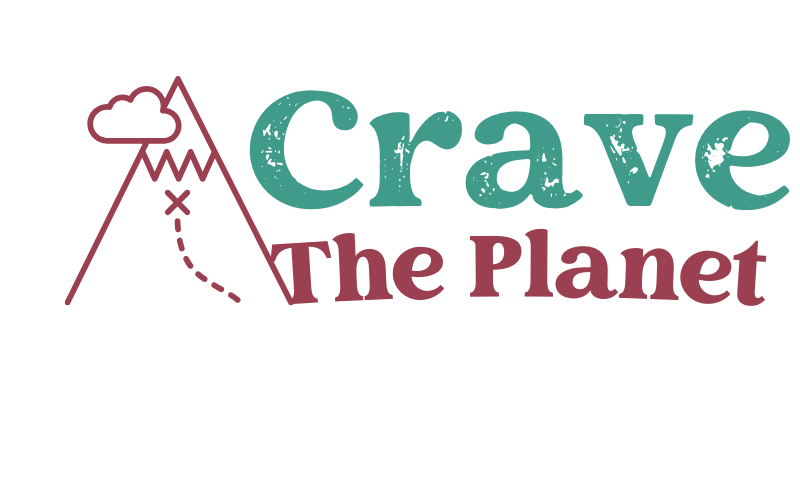
Things to Know About Truden
The municipality of Truden is situated in the southern part of South Tyrol, nestled within the wooded ridge of the Fleimstaler Alps that separates the Adige Valley from the Fleimstal. A significant portion of the municipality, covering a total area of 20.70 km², is protected within the Trudner Horn Nature Park.
The main village, Truden (1090–1180 m above sea level), is located at the upper end of the Mühlental on a south-facing mountain saddle, dominated by the Cislon ridge (1563 m) to the west.
The municipality also encompasses the hamlets of Mühlen (820–880 m) along the Trudner Bach to the southwest of the main village, a part of Kaltenbrunn (970–1000 m) to the northeast, and, in the far east, San Lugano (1060–1100 m) on the San Lugano Saddle (1097 m), a passageway from the Adige Valley to the Fleimstal.
To the south, the terrain rises towards the Trudner Horn (1781 m), although its summit lies just outside the municipal boundary.
Geographically, Truden is sometimes associated with the Unterland-Berg area, and accordingly, the municipality is part of the Überetsch-Unterland district association.
To the west and north, Truden shares borders with the South Tyrolean neighboring municipalities of Montan and Aldein. In the east and south, the municipality abuts Ville di Fiemme and Capriana in Trentino, as well as Altrei, the only South Tyrolean municipality in the Fleimstal.
Where to eat in Truden
When exploring the picturesque surroundings of Truden, you have an array of delightful dining options to choose from, ensuring a satisfying culinary experience.
Manna Resort (5 Stars)
For an exquisite dining experience, head to the Manna Resort, a luxurious 5-star destination. Indulge in a culinary journey that combines exceptional flavors with an elegant ambiance. Whether you’re savoring local specialties or international cuisine, Manna Resort promises a gastronomic adventure in a refined setting.
Kürbishof in Altrei
If you’re a fan of farm-to-table dining and enjoy the charm of rustic surroundings, the Kürbishof in Altrei is a must-visit. This establishment offers a unique culinary experience, with a focus on fresh, locally sourced ingredients. Delight in the seasonal flavors, especially their specialties that showcase the region’s agricultural richness.
Bar Max in Kaltenbrunn
For a more relaxed atmosphere and a taste of local life, make your way to Bar Max in Kaltenbrunn. This charming spot is not only a great place to unwind but also offers a selection of snacks and beverages. Whether you’re in the mood for a casual meal or just a refreshing drink, Bar Max provides a friendly setting to mingle with locals and fellow travelers.
Recreation and Hiking
Trudner Horn Nature Park offers an array of recreational possibilities, with hiking being a premier activity due to its diverse trails and breathtaking landscapes. Each season brings its unique charm, making the park an all-year destination for nature enthusiasts.
More Hiking Trails
As you explore Trudner Horn Nature Park, you’ll find the Trodena – Passo Cisa – Malga Monte Corno hike, which is a notable circular trail that encapsulates the beauty of the region. The path takes you through varied terrain, offering both challenge and reward with its panoramic views.
Another trail worth your attention is the Anterivo – Passo Cisa – Malga Monte Corno. This route also stands out for its scenic vistas and tranquil atmosphere that entices hikers of all levels. Along the trails, keep an eye out for the Ziss-Sattel, an impressive peak that provides a stunning backdrop for your trek.
Before heading out, it’s beneficial to check Komoot for recent reviews on trail conditions and the experiences shared by other hikers. This can prepare you for what to expect and help you plan accordingly.
The Nature Park House
The Nature Park House stands as a beacon of curiosity and discovery for children and nature enthusiasts alike. This unique sanctuary is more than just a building; it is an immersive experience, a gateway to the wonders of Truden’s natural world.
Upon entering the Nature Park House, children are greeted by a sense of excitement and anticipation. The air is filled with the earthy aroma of wood and the subtle fragrance of wildflowers, creating a welcoming atmosphere that encourages exploration. The walls are adorned with vibrant murals depicting the local flora and fauna, sparking the imagination of young visitors.
The heart of the Nature Park House is its interactive exhibits, carefully designed to engage young minds and foster a deep appreciation for nature. Children can embark on a journey of discovery, learning about the diverse ecosystems that call Truden home. From the intricate patterns of butterflies’ wings to the delicate balance of the forest ecosystem, every corner of the house invites exploration.
One corner of the Nature Park House is dedicated to the flora of Truden, showcasing the native plants and flowers that carpet the meadows and forests. Interactive displays allow children to touch and feel different leaves, seeds, and flowers, connecting them with the textures of the natural world. In another section, a miniature forest comes to life, complete with chirping birds and rustling leaves, offering a glimpse into the enchanting wilderness that surrounds Trodena.
Seasonal Activities
In winter, the park transforms into a serene, snow-covered wonderland. You may indulge in winter hiking; the Monte Cucul – Malga Cislon trail is particularly enchanting during the colder months, offering a tranquil environment blanketed by snow. Always ensure you have the proper gear and check weather conditions before venturing on winter hikes.
Beyond hiking, seasonal activities in the park include observing the unique flora and fauna that flourish at different times of the year, giving each visit a distinct flavor. Spring blooms and autumnal colors provide an ever-changing tapestry for photographers and nature lovers alike.
Geography and Climate
As you explore Trudner Horn Nature Park, you’ll be traversing a landscape rich in diverse topography and influenced by a unique, sub-Mediterranean climate. The park’s location in the southern Dolomites and its geological makeup play a crucial role in its weather patterns.
As you traverse the various landscapes within Trudner Horn, you’ll encounter diverse ecosystems ranging from dense forests to alpine meadows. Each turn in the trail offers an opportunity to discover the intricate relationships between species and their environment.
In fact:
It’s not just the land that’s been carefully preserved; the park also maintains traditional land uses, including the mosaic of farmland which has been shaped over centuries and now aids in conserving the park’s cultural heritage.
Conservation Efforts:
To truly understand the value of the ecosystems within Trudner Horn Nature Park, researchers have evaluated indicators in European forest history gradients here, highlighting the park’s role in broader ecological studies.
It stands as a core area of conservation, balancing human activity and natural preservation, ensuring that the park’s old cultural landscape remains intact for future generations to enjoy.
Topography
Providing a mix of mountainous and hilly landscapes, the park is a place where the rugged splendor of the Alps meets the verdant, softer terrains, offering you an array of scenic vistas.
Climate and Weather
You’ll find that the park falls within a sub-Mediterranean climatic zone, which permits a remarkable biodiversity. This climate yields milder conditions relative to the harsher alpine weather typically found in the greater Alps regions.
While the weather can be unpredictable and varies with altitude, you are generally likely to experience warm summers and cool, yet temperate, winters, making your visit pleasant in most seasons.
Biodiversity

Your exploration of Trudner Horn Nature Park reveals a dynamic web of life, showcasing a remarkable array of species. The region’s biodiversity is closely monitored, with studies evaluating the variety of life forms across European forests considering Trudner Horn a significant case for understanding how protected areas contribute to the conservation of biological diversity.
Flora
Trudner Horn Nature Park serves as a sanctuary for an extensive range of plant species. The park’s varied topography and climate conditions foster a diverse flora that includes both common and rare plants.
Research suggests that the mean number of species is influenced principally by land use. For instance, nutrient-rich meadows display a higher plant diversity compared to areas affected by intense agricultural activities, such as fertilized fields, which often exhibit a lower variety of plant life.
Fauna
The fauna in Trudner Horn Nature Park is just as diverse as its flora. Birds and amphibians contribute significantly to the park’s biodiversity.
Bird species thrive within the many forests of the park, experiencing a habitat that supports their life cycles. Similarly, amphibians find refuge in the park’s varied ecosystems, which provide necessary resources for their survival.
Studies, like those conducted on the Odonate fauna of Val Grande National Park, complement our understanding of how insects and other animal species form interconnected communities within such nature parks.
Conservation Efforts
In this park, your awareness of conservation is met with a series of strategic efforts aimed to preserve the region’s diverse ecosystems. Located in Italy’s Trentino-South Tyrol region, the park constitutes an important protected area ensuring the survival of various species and habitats.
Nature Conservation Offices: You will find that both Trento and Bolzano have been actively involved in recording and monitoring the native wildlife populations, ensuring that the park’s conservation measures are up-to-date and effective.
- Habitat Protection: Initiatives have been taken to maintain the natural habitats within the park, with particular attention to secondary grasslands, curbing the encroachment of shrubs and pioneer woodlands.
Biodiversity Monitoring: Your visit may coincide with ongoing assessments of biodiversity, as the park is part of a study to evaluate indicators of forest biodiversity at the stand scale. These evaluations help inform the management strategies for forest conservation.
- Species Records: New species discoveries, such as Aeshna subarctica elisabethae (a type of dragonfly), are a testament to the park’s thriving conditions, which you can learn more about through various research publications.
Cultural Insights

In the Trudner Horn Nature Park, you can immerse yourself in a region rich with unique cultural heritage, from the traditional practices of local communities to the exquisite flavors of South Tyrolean gastronomy.
This section uncovers the cultural aspects deeply rooted in the local areas of Truden, Altrei, and beyond, all the way to the Cembra Valley and the Val di Fiemme Alps.
Local Traditions
The communities of Truden, Altrei, Montan, and Salurn preserve a way of life that’s intricately tied to the rhythms of nature. You’ll find a strong tradition of grain milling in the area, which serves as a testament to the historical significance of agriculture.
Annual festivals reflect the pride of locals in their customs, giving you a glimpse of rural life that has sustained through the centuries. In autumn, the wine-growing village of Neumarkt offers a look back in time during the traditional harvest festivals, where you can witness age-old practices in wine production.
Gastronomy
When it comes to local cuisine, your palate is in for a treat. The dishes here are made from recipes passed down through generations, often sourced from the freshest local ingredients.
Near Lake Caldaro, you’ll indulge in wines that carry the essence of the region’s viticultural expertise. The Cembra Valley and the Val di Fiemme Alps contribute heartily to the food scene, offering a selection of cheeses and cured meats characteristic of alpine gastronomy.
Expect to savor hearty breads, smoked sausages, and apple strudels, presented with a glass of the finest local wines.
Accessibility and Infrastructure
In exploring Trudner Horn Nature Park, you’ll find well-maintained access points and a range of facilities that enhance your visit. The park is conveniently situated for travelers, offering a blend of natural escapism and essential amenities.
Getting There
By Car:
If you’re driving from Bolzano, take the SS12 north to Neumarkt (Egna) and switch to the SS48 heading east. After reaching Montan, follow the signage directing you to Trudner Horn Nature Park.
From Trentino, via the A22 highway, exit at Neumarkt, and similarly approach via the SS48.
- Public Transport:
Train services connect major cities like Bolzano to smaller towns such as Neumarkt and Auer (Ora). From there, you can catch a bus towards Montan and other nearby villages at the foothills of the park.
Accommodation and Facilities
- Hotels and B&Bs:
Stay in charming accommodations dotted around the Etschtal valley, including options in Cembra, offering a comfortable base for your explorations. Sonnhof hotel in Truden offers a pool. - Park Facilities:
Discover visitor centers and well-marked trails throughout the park. Informational displays about the diverse local ecology are located primarily in Montan, which serves as your gateway to the park’s extensive network of paths.
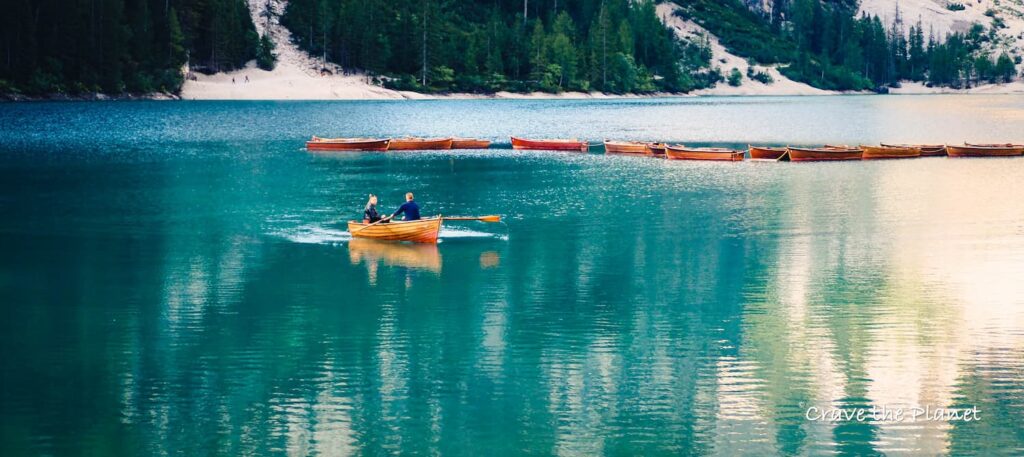
More Dolomites Travel Blogs
Frequently Asked Questions
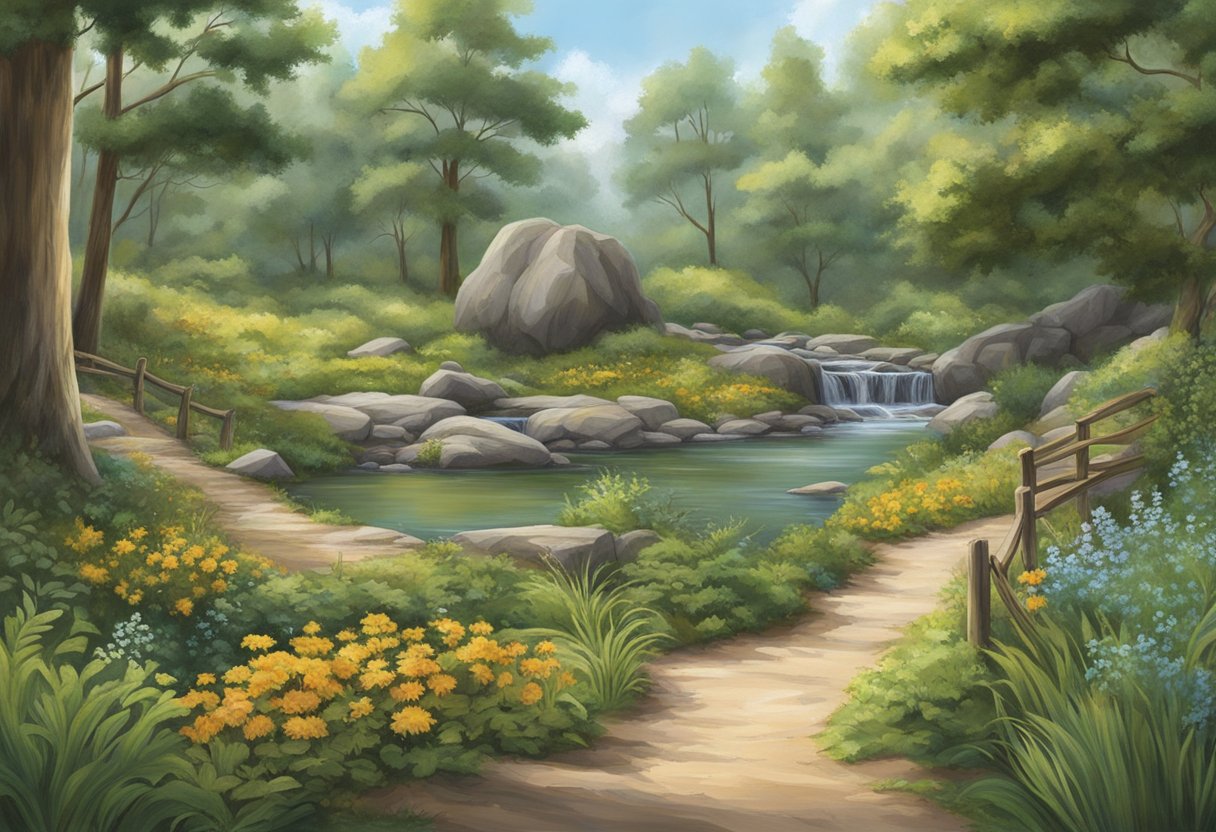
This protected area is a haven for nature enthusiasts and hikers. If you’re planning a visit, here are some answers to common questions that can help make your experience seamless and enjoyable.
What are the opening hours of Trudner Horn Nature Park?
Trudner Horn Nature Park is open year-round, but specific facilities within the park may have varying operating hours. It’s best to check the park’s official website for the most accurate and current information before planning your visit.
Are there guided tours available at Trudner Horn Nature Park?
Yes, guided tours are available, offering an in-depth exploration of the park’s diverse flora and fauna. For up-to-date information on tour availability and reservations, it’s advisable to contact the park’s visitor center.
What type of wildlife can be spotted in Trudner Horn Nature Park?
The park boasts a vast diversity of wildlife, including a range of bird species, insects, and mammals. Specific information and recent sightings can often be found on nature-focused studies like the evaluation of biodiversity indicators.
Are there any specific hiking trails recommended for first-time visitors?
Trudner Park offers various trails tailored to different experience levels. Beginners might enjoy shorter, well-marked trails, while those seeking a challenge may prefer the longer, more demanding routes. Maps and recommendations are available at the park’s visitor center.
What are the facilities available for visitors within the park?
The park provides basic amenities such as restrooms and picnic areas. Certain zones may have additional facilities like information stands or observation points, ensuring a comfortable and informative visit.
Is there an entrance fee for Trudner Horn Nature Park?
Generally, there is no entrance fee to visit, making it an accessible option for everyone. However, some special events or guided tours might require a fee. Always verify the details prior to your visit to confirm if there are any costs associated with your planned activities.
Craving a Hut to Hut Hiking Adventure?
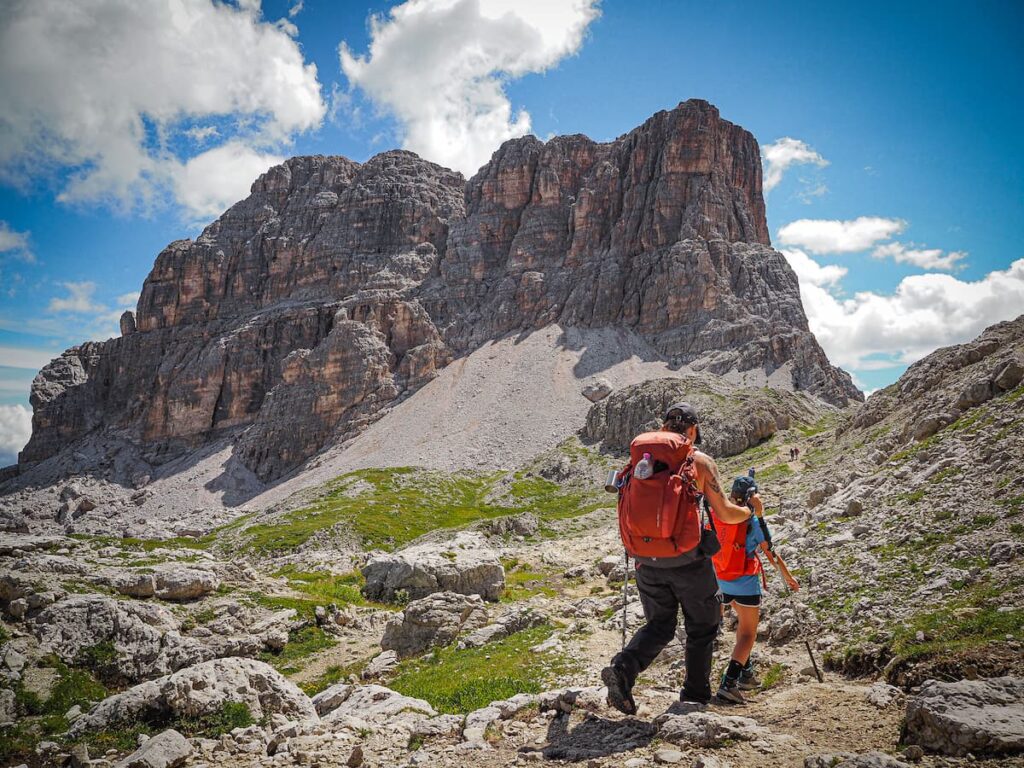
Hut to Hut Hiking in the Dolomites Free Course
Curious about hut-to-hut hiking in the Dolomites, but not sure where to start or what to expect? Sign up for our newsletter that simplifies and educates so you can focus on the views and vino. Get curious, get ready, and let’s get started! Sign up here👇🏼
- Free Email Course to Learn : Everything You Need to Know About Hut to Hut Hiking

Author profile: Morgan Fielder is a Doctor of Physical Therapy and passionate hiker who believes in exploring the world on foot with good food. Follow her journey as she shares science-based hiking tips and advocates for sustainable tourism.
